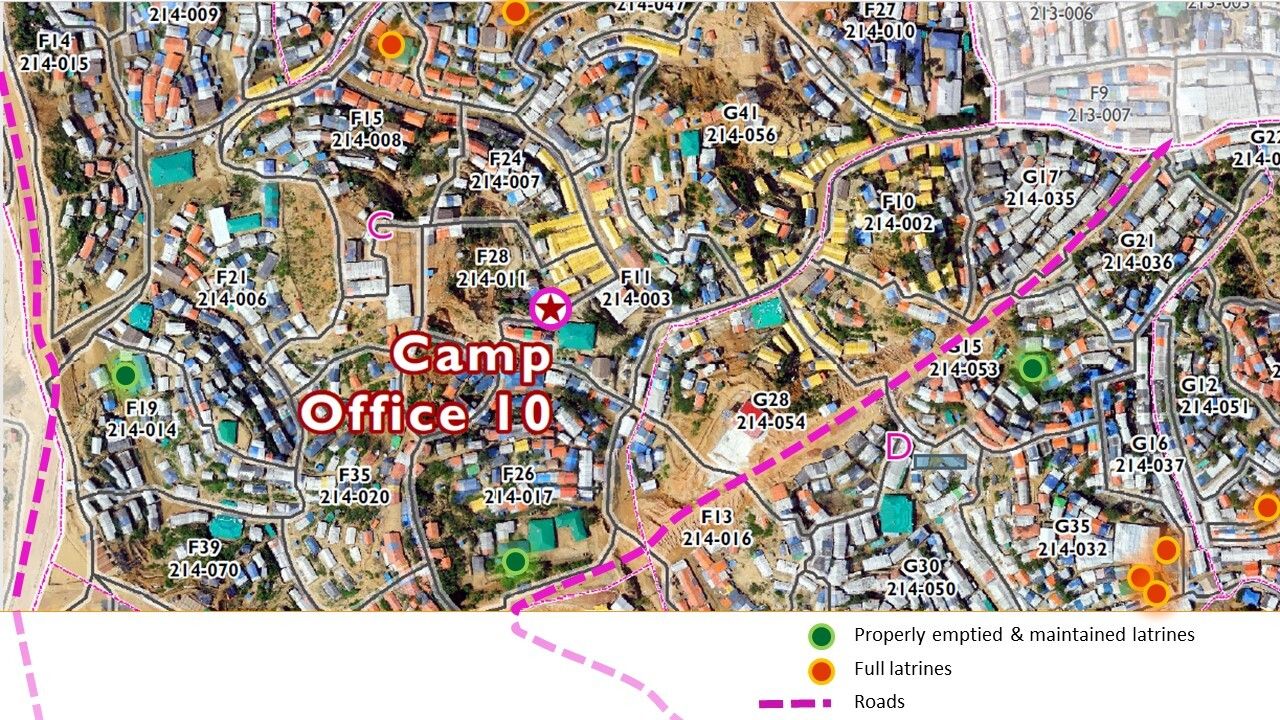
It's the Pits!
A number of challenges can arise when latrines are constructed without consideration of how and when the pits will be emptied. Soil stability, fill rates, pit lining options, vehicle access and availability of emptying services should all be considered early on.
In this fictional scenario, latrines were built quickly in a humanitarian crisis to prevent a public health crisis due to open defecation. Your challenge is to evaluate the current sanitation situation at a camp. Through the process, you will learn how to avoid the pitfalls that are commonly found after latrine construction in real life crises.
It's the Pits!
A number of challenges can arise when latrines are constructed without consideration of how and when the pits will be emptied. Soil stability, fill rates, pit lining options, vehicle access and availability of emptying services should all be considered early on.
In this fictional scenario, latrines were built quickly in a humanitarian crisis to prevent a public health crisis due to open defecation. Your challenge is to evaluate the current sanitation situation at a camp. Through the process, you will learn how to avoid the pitfalls that are commonly found after latrine construction in real life crises.
Select a language
Duration
10 min
Need help?
Can’t find what you need? Have more questions about a topic? Need advice on how to use a resource? Chat with a CAWST advisor.
Contact usAbout CAWST
CAWST is a Canadian charity and licensed engineering firm. We address the global need for safe drinking water and sanitation by building local knowledge and skills on household solutions people can implement themselves.